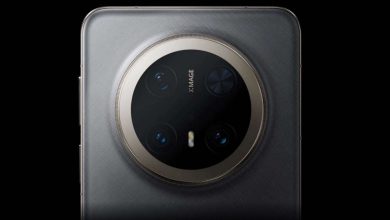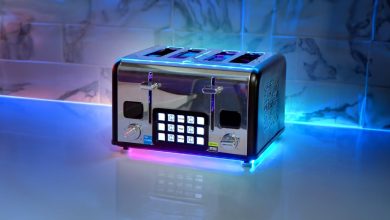AMD Unveils 4th Generation EPYC ‘Genoa’ CPUs, Up To 3x Faster Than Intel’s Highest End Offering
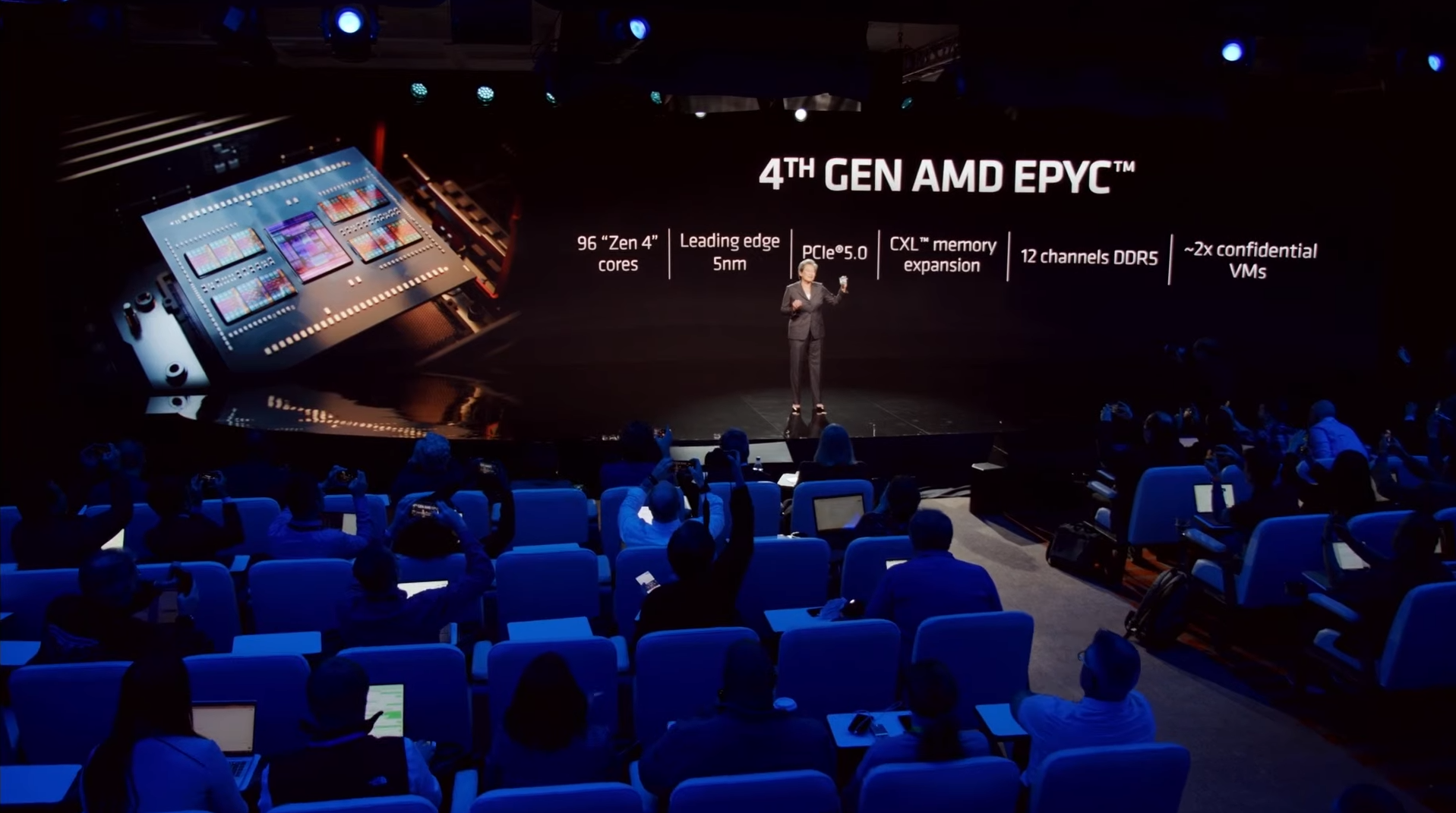
AMD just unveiled its next-gen EPYC ‘Genoa‘ lineup targeted for the server segment of the market. Claiming its lead in performance, AMD expects Genoa to outclass its competitors by a huge margin. That is without a doubt true because Intel after facing various delays is still yet to respond to AMD’s now last-gen Milan. Genoa is a different beast and takes the spot for the fastest x86 ISA CPU in the world.
AMD’s server-oriented HEDT Zen4 lineup arrives in 3 different flavors. First, we have the standard Zen4-based Genoa, then the Density-Optimized Zen4C codenamed Bergamo. Last but not least is the Zen4 V-Cache equipped Genoa-X series. A lower-end Genoa offering named ‘EPYC Siena‘ will also be available sometime in the future and will make use of the SP6 platform.
AMD’s standard Genoa goes up to a maximum of 96 cores / 192 threads, which of course is featured on the flagship EPYC 9654 processor. Bergamo takes this to a total of 128 cores / 256 threads for the EPYC 9754. To put that into perspective, Intel’s highest-end Xeon Platinum 8380 features just 40 cores.
Platform Features
AMD’s EPYC 9004 CPUs support the SP5 or the LGA 6096 socket which as the name suggests consists of 6096 pins in an LGA layout. These CPUs feature support for 128 PCIe Gen 5 Lanes along with DDR5-5200 memory. With Zen4, the memory bandwidth is increased by almost 2.3x when compared to Milan. In addition, RDIMM & 3DS RDIMM memory is also supported in 2 DIMMs per channel.
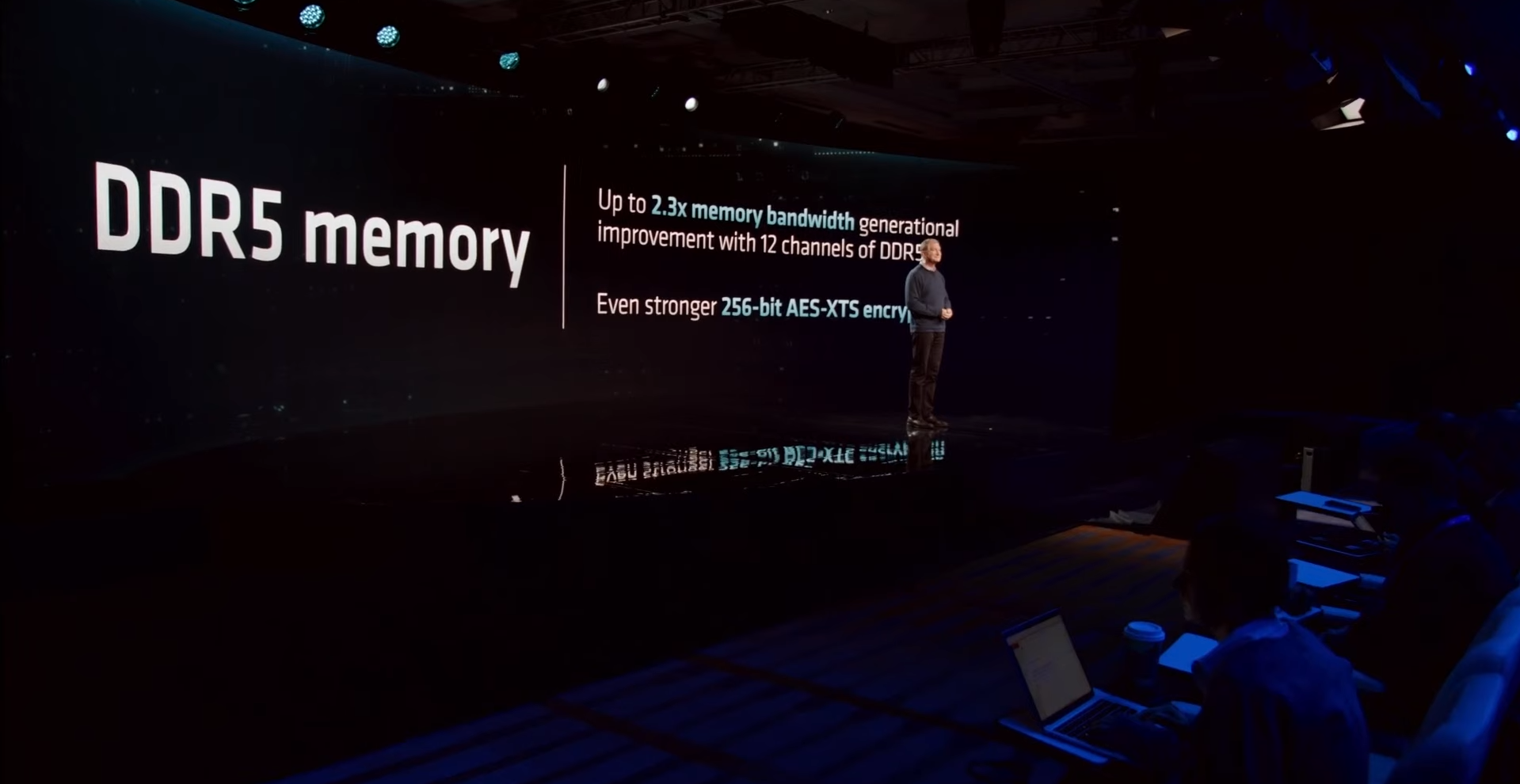
TSMC’s 5nm process node has enabled AMD to achieve really high-performance increments gen-on-gen. In contrast to Zen3, the die area has shrunk by almost 18% despite the inclusion of various new features. The new process shows its true colors in the area efficiency segment. Zen4 consumes 40% less area than its competitors and is a whopping 48% more energy efficient.

At the same TDP, AMD’s 4th gen EPYC is up to 2.7x more power efficient than the last generation. This difference will only increase when we put Intel’s current offerings into the mix.

The World’s Fastest x86 CPU
The EPYC 9654 ships with 96 cores / 192 threads giving it a massive advantage over Intel. Alongside that, we see 384MB of L3 cache which is 50% higher than Milan. The EPYC 9654 spans across 12CCDs for 32MB of L3 cache and 8 Zen4 cores per CCD. The base frequencies for this monstrosity stand at 2.05GHz – 2.15GHz going as high as 3.5GHz–3.7GHz. All this performance comes in at just 360W of power.
Performance
As compared to Zen3, the server targeted Zen4 offers a 14% IPC uplift over a geomean of 33 server workload tests. Zen4 is basically a derivate of Zen3, therefore AMD put every last bit of effort to maximize the potential of the base architecture. Zen3 increased the execution width which as a result meant that Zen4 required the instructions to be fed faster.
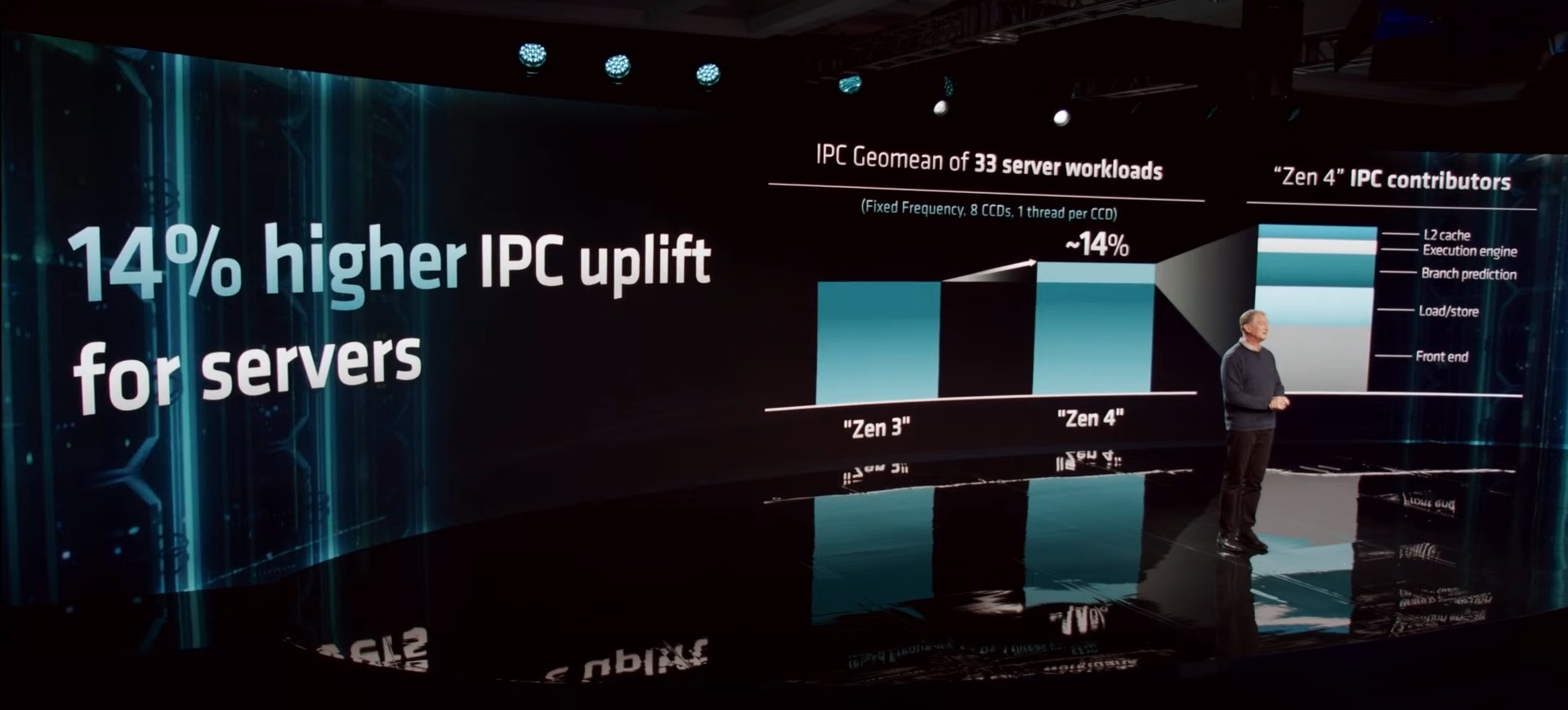
Boasting the power these CPUs behold, the EYPC 9654 offers 3x more performance than Intel’s best HEDT CPU to date. Against the Milan-based EPYC 7763, the 9654 is a whopping 1.6x faster.
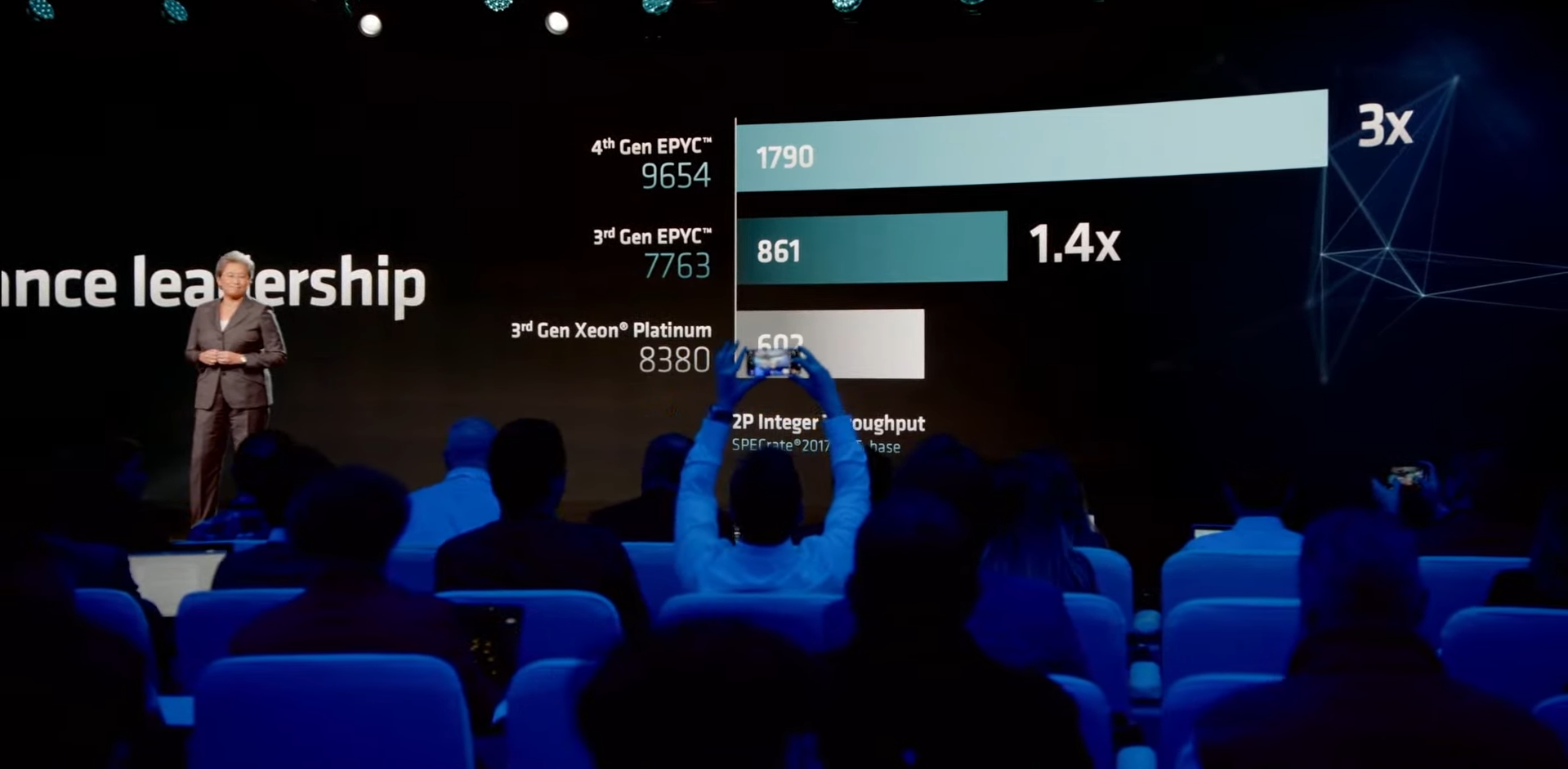
At the same core counts, Genoa is 55% faster than the current competition. The per-core performance improvements are substantial this generation with AMD dividing the standard Genoa lineup across various segments.
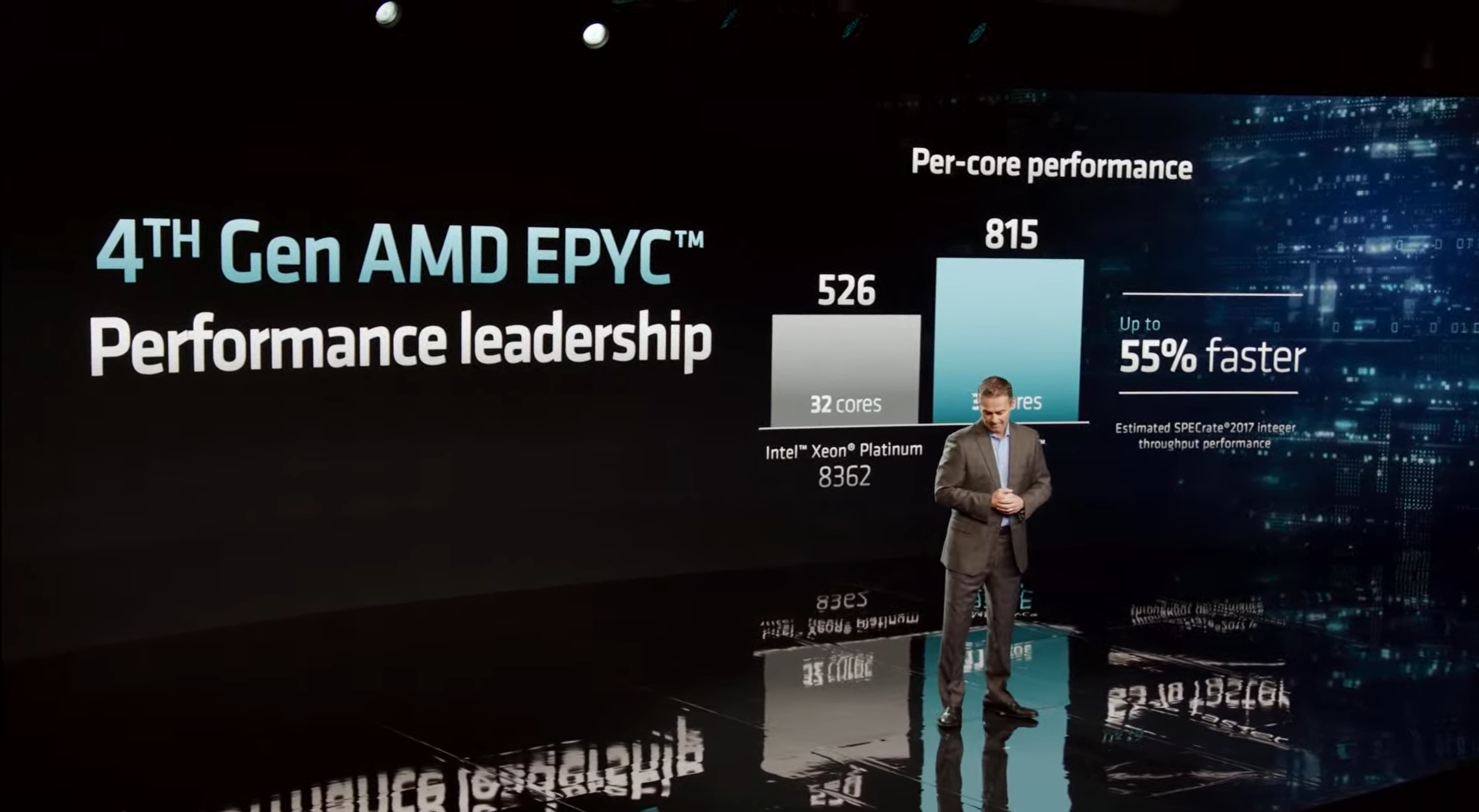
In business analytical workloads, Genoa delivers 2.7x more performance than Intel’s top-notch 8380. This is especially important in business because more transactions each second equate to more connections and more sales.
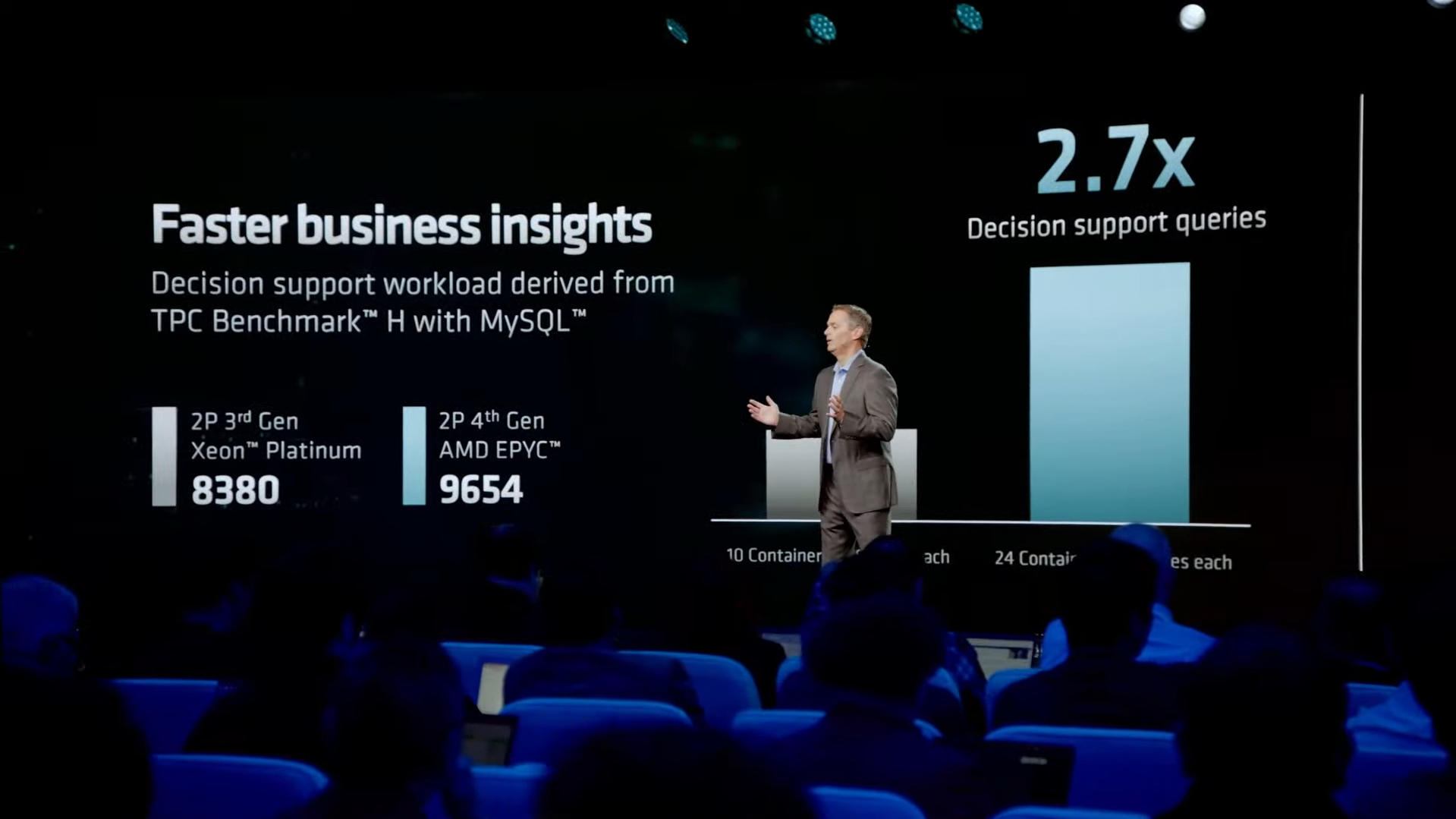
In the virtualization field, AMD’s solution delivers almost 3x more performances as revealed by VMmark. Team red claims that they offer more than 3x density allowing more VMs to be deployed.
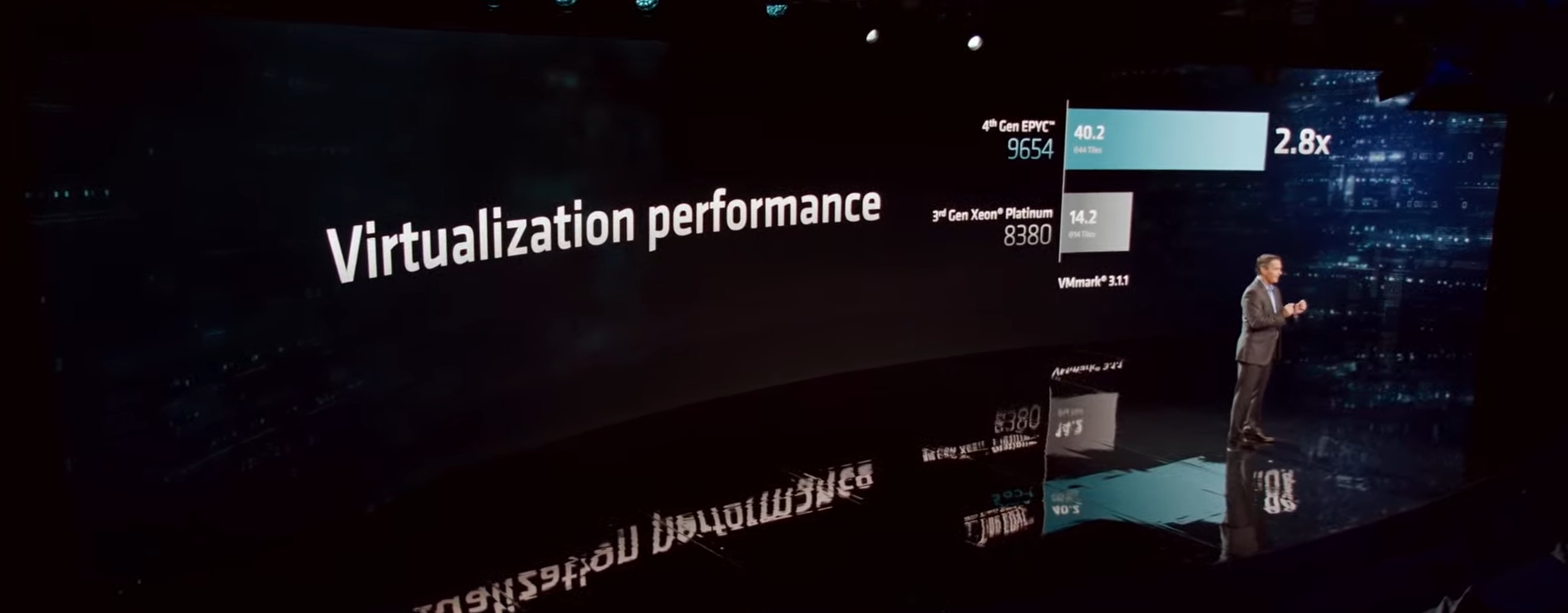
Efficiency
For a specific task, Genoa takes 67% fewer servers which in turn consumes 52% less power than Intel. In addition, we see a 40% CAPEX and a 61% OPEX reduction annually.
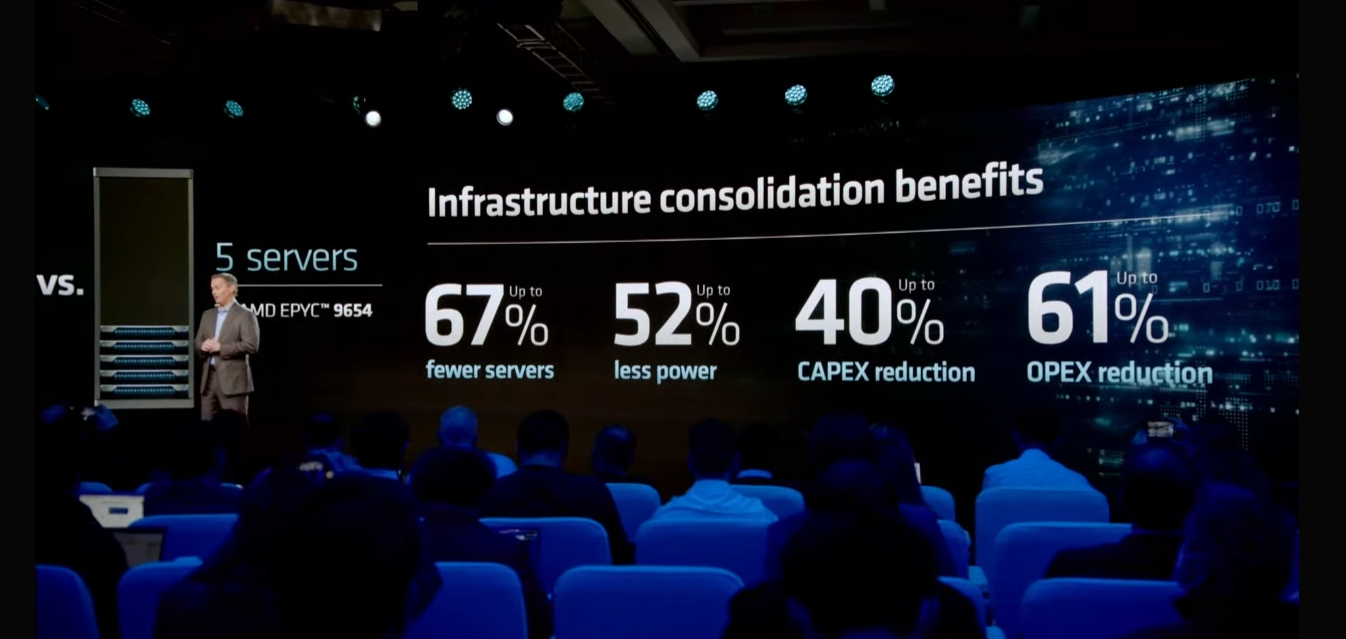
Now imagine if you had 1 Million Intel 8380 servers, just imagine for a second. The output is of course going to be tremendous. AMD’s 9654 can deliver on-par performance with just 0.32M servers or 32%. That is insane! For the sake of comparison, this means that one 9654 CPU is equivalent to three 8380 processors. Though not linear, this comparison does provide us with a great insight into what AMD plans to launch.
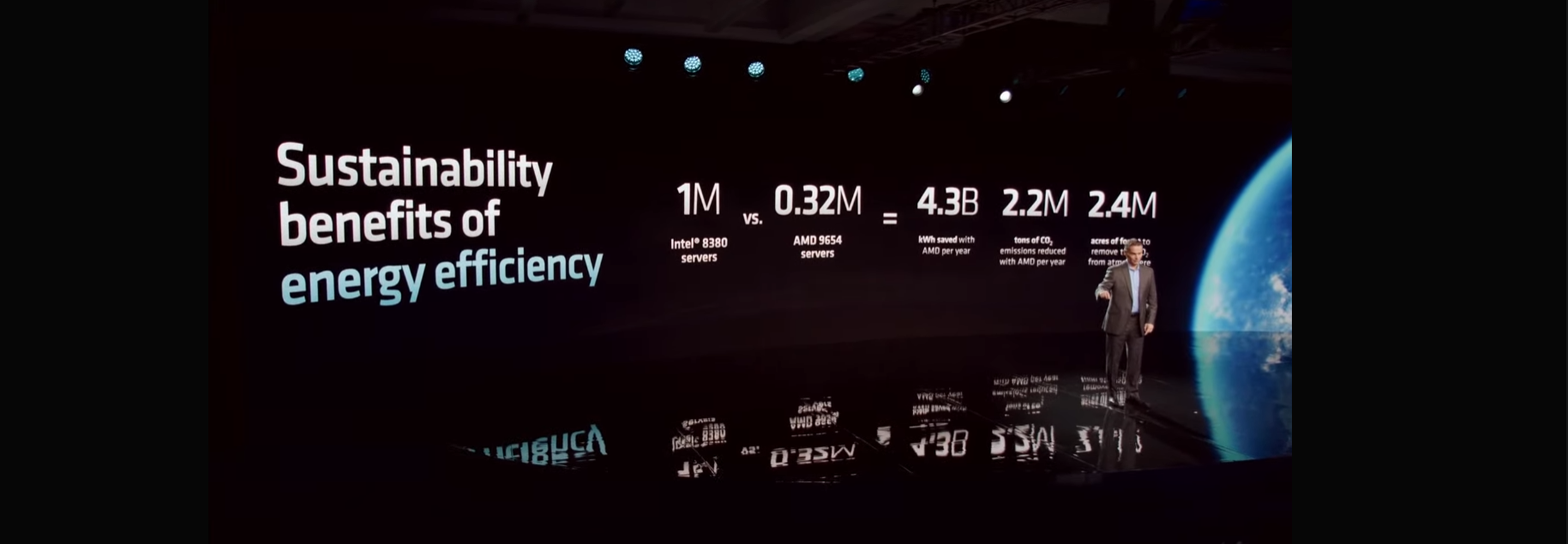
Genoa is not just powerful but it is extremely efficient as well. AMD’s EPYC 9654 is 2.6x more efficient than the Ice-Lake based Xeon Platinum 8380. Moving into the future, the demand for performance will surely increase although power will become a limiting factor. AMD aims to resolve this issue by incorporating various features in the architecture itself enabling high efficiency with high performance.
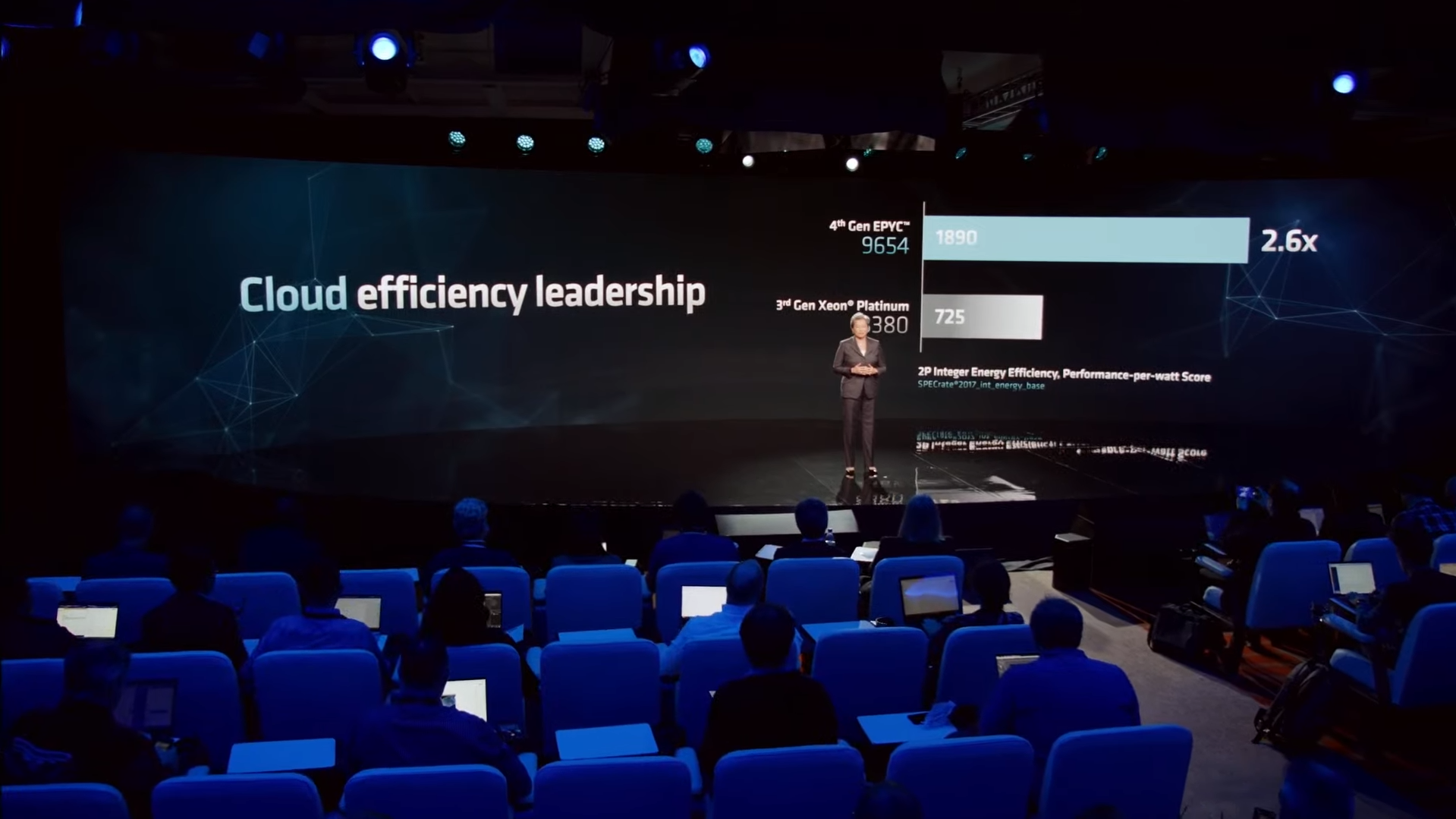
Remaining on the topic of power efficiency, a typical Xeon platform for a specific workload will cost you around $47,764. This setup contains 15 servers over an estimated $0.46 cost per 1 unit of electricity. Upgrading to Genoa reduces this cost by more than 2x by using just 5 servers against Intel’s 15 servers.
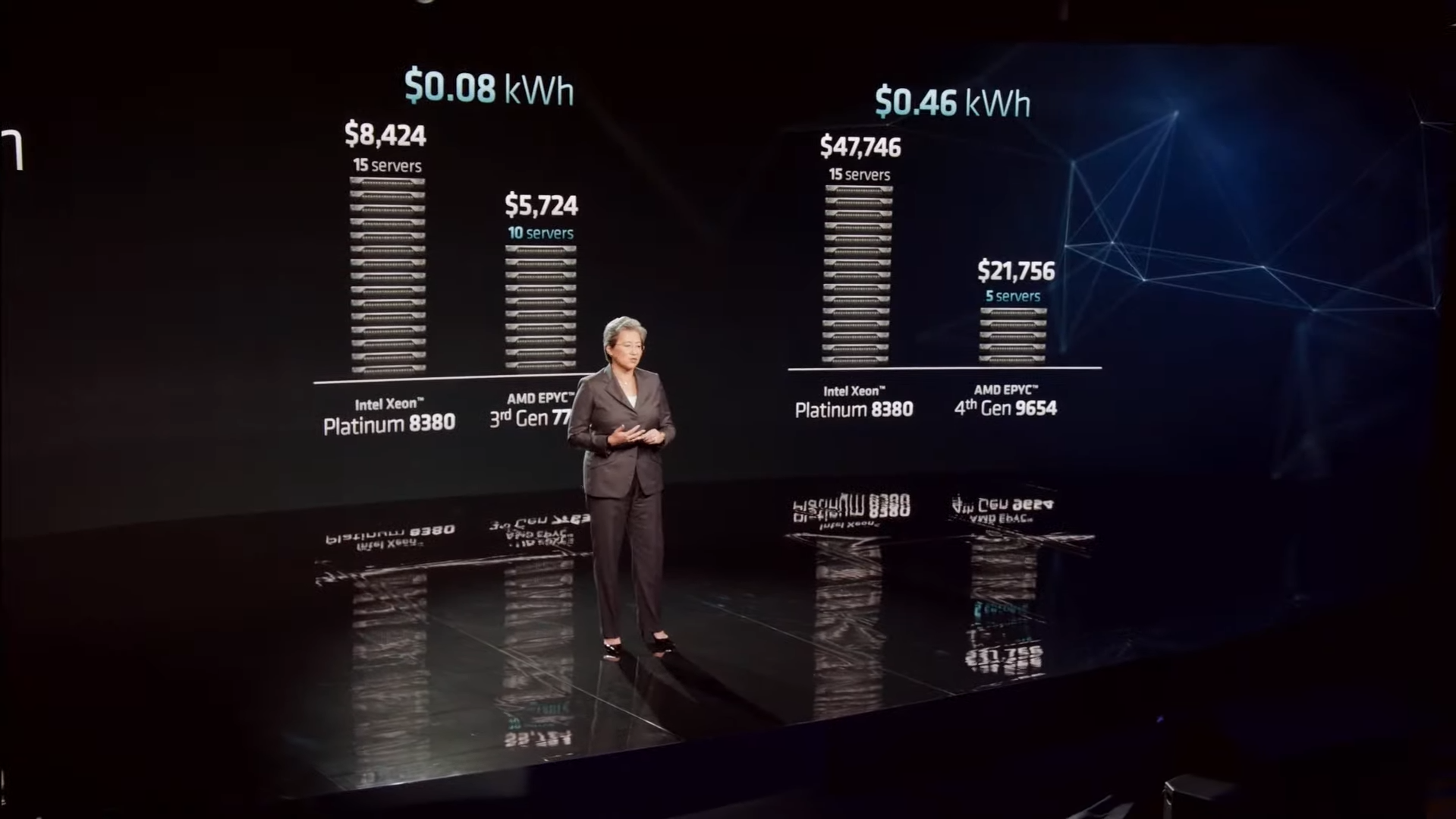
Release Date
AMD’s top-notch Genoa processors are available starting today. In 1H 2023, we will see the density-optimized Bergamo lineup unveiled along with Genoa-X probably around the same time. These CPUs are most likely slated for launch at CES. Similarly, the lower-end Siena series is planned for 2H 2023 which will make use of the SP6 platform.
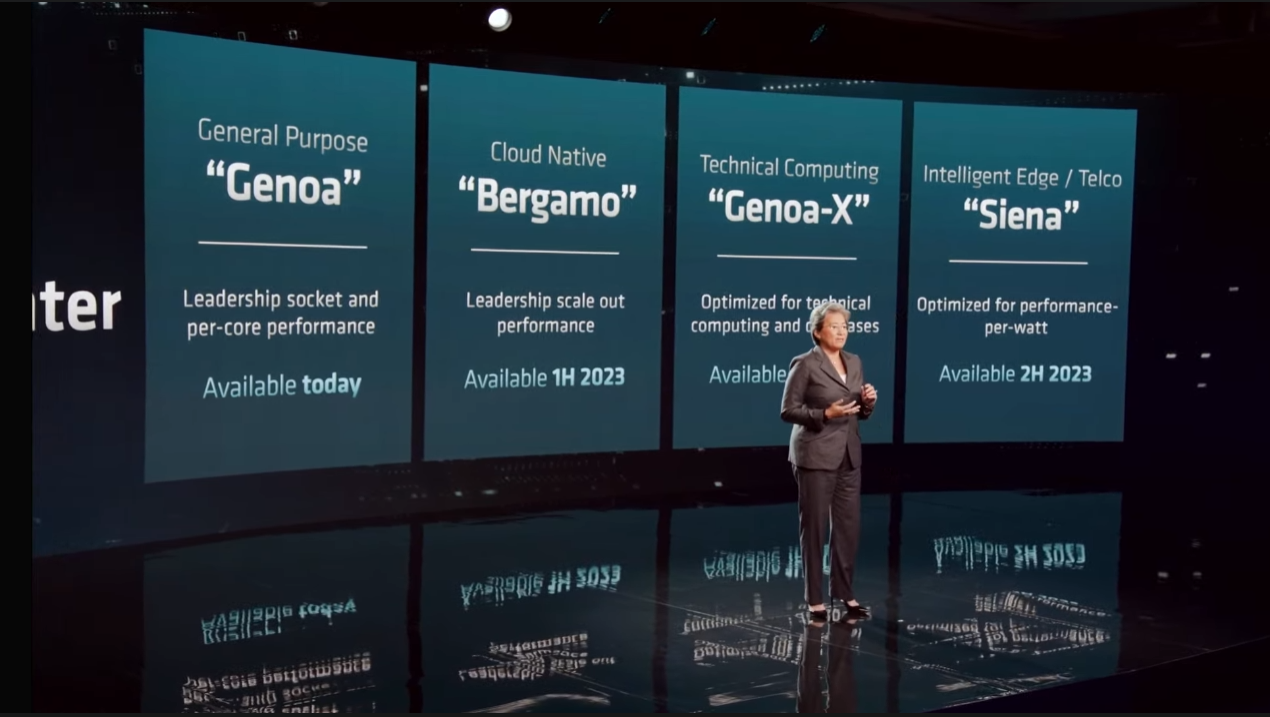
Genoa Lineup
AMD’s Genoa is not just an all-in-one expensive solution rather it is aimed at various market segments powering different workloads. For Cloud and High-Performance-Computing, SKUs are available ranging from 96 cores down to 48 cores, optimized for density and throughput. The enterprise segment is aimed at delivering high per-core performance with a maximum of 48 cores. For power and cost savings, we have the enterprise segment which goes as low as 16 cores.
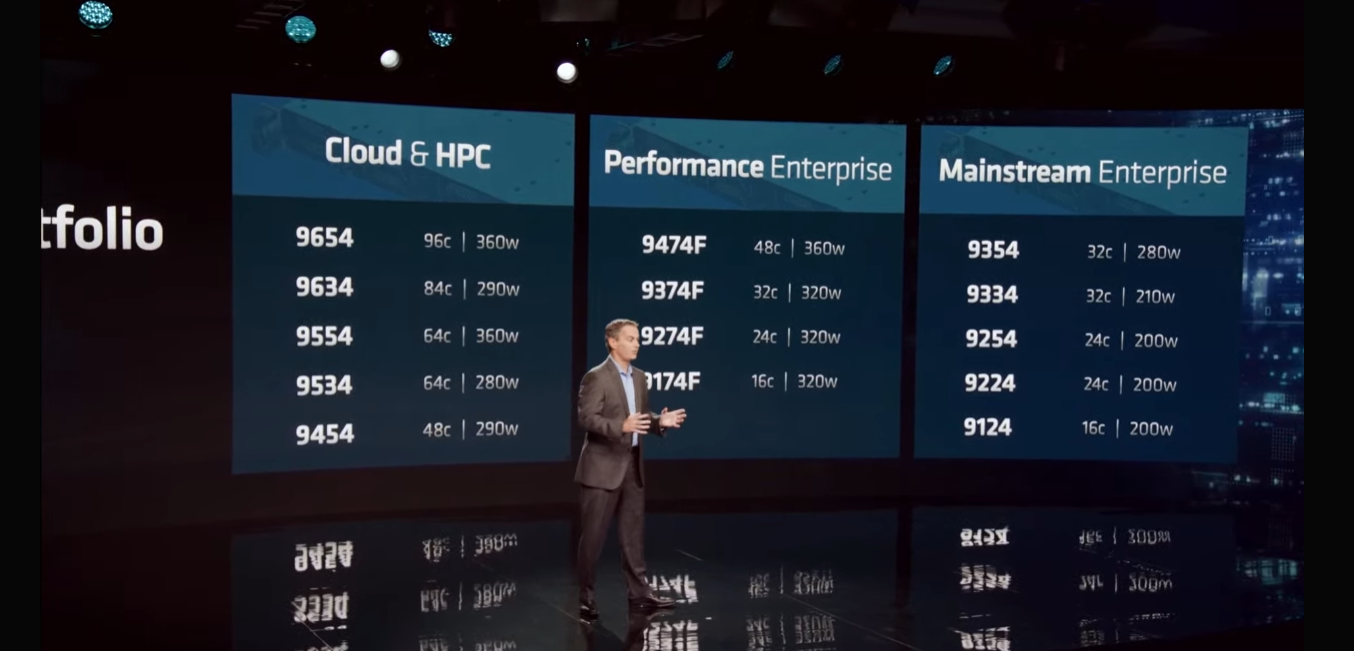
| Model | Cores/Threads | Default TDP (In Watts) | cTDP (In Watts) | CCDs | L3 Cache (MB) | Base Frequency (GHz) | Max Frequency (GHz) | Workload |
| 9654 | 96/128 | 360 | 320-400 | 12 | 384 | 2.05-2.15 | 3.5-3.7 | Density Optimized |
| 9634 | 84/168 | 290 | 320-400 | 12 | 384 | 2.0-2.1 | 3.5-3.7 | Density Optimized |
| 9554 | 64/128 | 360 | 320-400 | 8 | 256 | 2.7-2.9 | 3.5-3.7 | Density Optimized |
| 9534 | 64/128 | 280 | 240-480 | 8 | 256 | 2.3-2.4 | 3.5-3.8 | Balanced |
| 9454 | 48/96 | 290 | 240-480 | 8 | 256 | 2.25-2.35 | 3.5-3.9 | Balanced |
| 9354 | 32/64 | 280 | 240-480 | 8 | 256 | 2.75-2.85 | 3.5-3.10 | Core Strength |
| 9334 | 32/64 | 210 | 200-240 | 4 | 128 | 2.5-2.6 | 3.5-3.11 | Balanced |
| 9254 | 24/48 | 200 | 200-240 | 4 | 128 | 2.4-2.5 | 3.5-3.12 | Balanced |
| 9224 | 24/48 | 200 | 200-240 | 4 | 64 | 2.15-2.25 | 3.5-3.13 | Cost Optimized |
| 9124 | 16/32 | 200 | 200-240 | 4 | 64 | 2.6-2.7 | 3.5-3.14 | Cost Optimized |
| 9474F | 48/96 | 360 | 320-400 | 8 | 256 | 3.2-3.4 | 4.0+ | Core Strength |
| 9374F | 32/64 | 320 | 320-400 | 8 | 256 | 3.3-3.5 | 4.0+ | Core Strength |
| 9274F | 24/48 | 320 | 320-400 | 8 | 256 | 3.4-3.6 | 4.0+ | Core Strength |
| 9174F | 16/32 | 320 | 320-400 | 8 | 256 | 3.6-3.8 | 4.0+ | Core Strength |
| 9654P | 98/128 | 360 | 320-400 | 12 | 384 | 2.05-2.15 | 3.5-3.7 | Density Optimized |
| 9554P | 64/128 | 360 | 320-400 | 8 | 256 | 2.7-2.9 | 3.5-3.7 | Density Optimized |
| 9454P | 48/96 | 290 | 240-280 | 8 | 256 | 2.25-2.35 | 3.5-3.7 | Balanced |
| 9354P | 32/64 | 280 | 240-280 | 8 | 256 | 2.75-2.85 | 3.5-3.7 | Core Strength |


